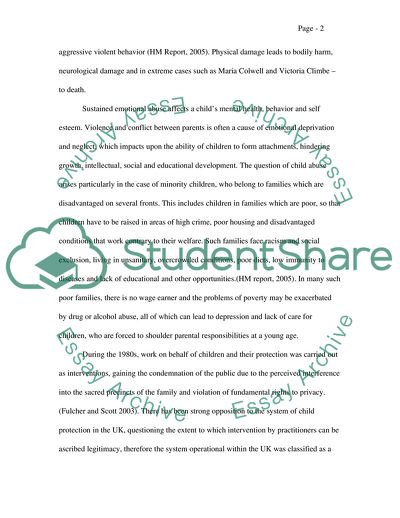Cite this document
(Child Protection Policy Term Paper Example | Topics and Well Written Essays - 2500 words, n.d.)
Child Protection Policy Term Paper Example | Topics and Well Written Essays - 2500 words. https://studentshare.org/social-science/1706459-following-the-death-of-victoria-climbie-the-government-has-introduced-new-measure-to-protect-children-discuss-te-above-in-relationship-to-the-dilemmas-facin-pr
Child Protection Policy Term Paper Example | Topics and Well Written Essays - 2500 words. https://studentshare.org/social-science/1706459-following-the-death-of-victoria-climbie-the-government-has-introduced-new-measure-to-protect-children-discuss-te-above-in-relationship-to-the-dilemmas-facin-pr
(Child Protection Policy Term Paper Example | Topics and Well Written Essays - 2500 Words)
Child Protection Policy Term Paper Example | Topics and Well Written Essays - 2500 Words. https://studentshare.org/social-science/1706459-following-the-death-of-victoria-climbie-the-government-has-introduced-new-measure-to-protect-children-discuss-te-above-in-relationship-to-the-dilemmas-facin-pr.
Child Protection Policy Term Paper Example | Topics and Well Written Essays - 2500 Words. https://studentshare.org/social-science/1706459-following-the-death-of-victoria-climbie-the-government-has-introduced-new-measure-to-protect-children-discuss-te-above-in-relationship-to-the-dilemmas-facin-pr.
“Child Protection Policy Term Paper Example | Topics and Well Written Essays - 2500 Words”. https://studentshare.org/social-science/1706459-following-the-death-of-victoria-climbie-the-government-has-introduced-new-measure-to-protect-children-discuss-te-above-in-relationship-to-the-dilemmas-facin-pr.


